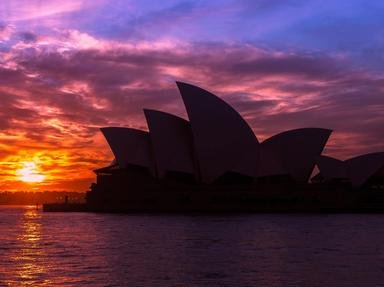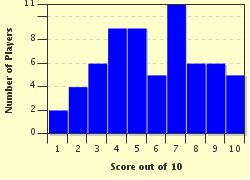Quiz Answer Key and Fun Facts
1. The colonial town of Sydney was growing and needed more farmland. The passage to inland regions was blocked by the Blue Mountains, a range with precipitous cliffs and no obvious route over it. This was changed by Blaxland, Lawson and Wentworth who found a route over the mountains in 1813. This lead to the foundation of Australia's first inland town. What town was the first inland town in Australia?
2. The first Australian colony to give all women the vote was South Australia. Was South Australia also the first colony or state to allow women to stand for election?
3. Andy Thomas made headlines in Australia in 1996 by becoming the first Australian-born what?
4. Australians have been able to board a train since the 1850s, but the various colonies decided to use different gauges for their rail lines. In which decade did it become possible to travel between Sydney and Melbourne without having to change trains at the border, as the line became standard gauge for the entire route?
5. Prior to the development of the electronic media and the internet, newspapers were a vital means of mass communication. What was Australia's first newspaper?
6. Australia was one of the pioneers of the movie industry. The world's first feature film was made in Australia in 1906. Who or what was the subject of that movie?
7. Given that Australia is the home of the first full-length feature film, it's not surprising that Australians have won some Academy Awards. Which of these Australians was the first to win an Oscar in any field?
8. Australians love their sport and it's sometimes said that too much sport is never enough. Less than 100 years after British settlement, a sporting team representing Australia travelled to England in 1868.
Was the first Australian sporting team to travel outside Australia an Aboriginal team?
9. 1915 saw the first Australian win a Nobel Prize. Sharing the prize with his father, which Australian won a Nobel Prize in Physics in 1915?
10. There's gold in them thar hills! Gold had been discovered in Australia in the early part of the 19th century and Australia remains a leading gold exporter, but the first true 'gold rush' occurred in 1851. This followed the discovery of gold in which Australian colony?
Source: Author
Tizzabelle
This quiz was reviewed by FunTrivia editor
gtho4 before going online.
Any errors found in FunTrivia content are routinely corrected through our feedback system.


